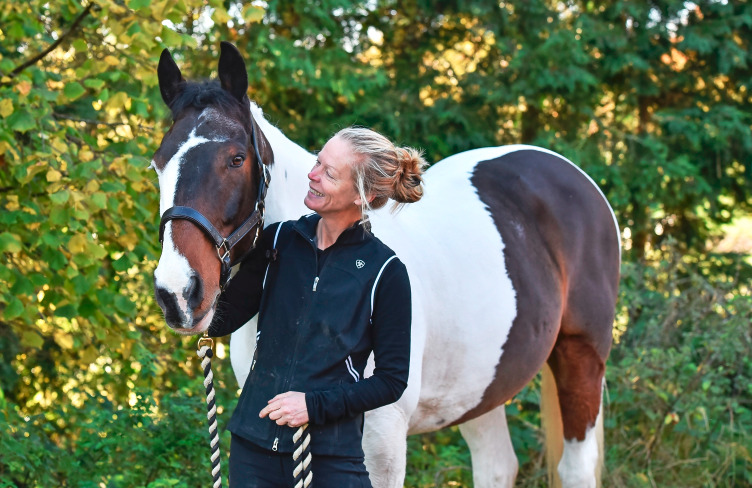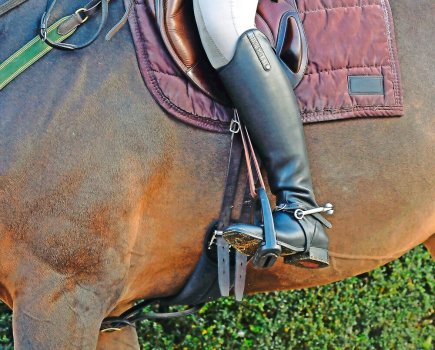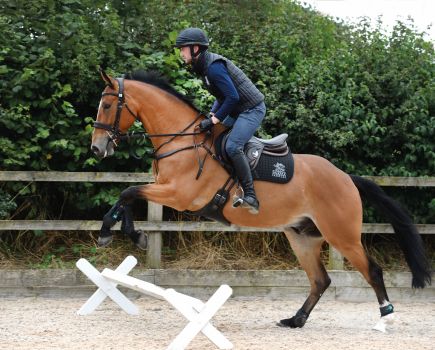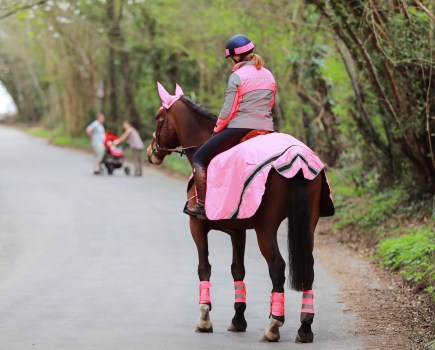Having a good relationship with your horse provides incredible benefits.
A horse who likes and trusts you will be safer and easier to handle, quicker to learn, may perform better and is just a joy to be around.
You’ll be happier and more confident too!
Certified equine behaviour consultant Justine Harrison shares seven ways to improve the bond you have with your horse:
1. Just hang out
Being stabled for long hours at this time of year means that your horse will likely be very bored, so take the opportunity to spend some quiet time with him and get to know him better.
Catch up on your chores — sort out your grooming kit, clean your tack and so on — outside his stable so that he isn’t alone.
You could even read a book or study with him. He will really appreciate the company and it could improve your relationship.
2. Find his itchy spots
Scratching around the withers and base of the neck can lower a horse’s heart rate and help him to relax. When horses mutually groom each other, it increases herd cohesion and strengthens bonds between individuals. It can strengthen the bond you have with him too!
Most horses have several special itchy spots where they love to be scratched, so see if you can find your horse’s favourite. It may be somewhere that he can’t reach, such as his chest, under his bottom jaw, the underside of his neck or inside a hindleg.
You will know you’ve hit the spot when his nose starts twitching or he tries to return the favour by scratching you back.
3. Go for walks
With less turnout time, you could combine allowing your horse to eat and exercise at the same time by taking him for walks in-hand, allowing him to graze or browse the hedgerows.
It’s great exercise for you both — a change of scene for him; he gets to eat a greater variety of shrubs and bushes than those in his field; you get to spend some quality time together and he will start to associate you with positive experiences.
If he’s worried about going out alone, enlist a human friend and their calm equine as company. This will enable your horse to build up confidence in new environments too.
4. Make a toy box
Make a toy box to entertain your horse, either for use in the stable or for when he’s tied up. Half fill a strong bucket or crate with horse-safe toys — large dog toys, rubber balls and rings are ideal. Scatter grass nuts, vegetable strips or high-fibre treats in the bottom and pour a little diluted apple or carrot juice on top.
Watch to make sure that he doesn’t become frustrated or swallow anything he shouldn’t and give him only 10-15 minutes at a time with it to maintain his interest.
Toy boxes become a real treat and are a useful way to occupy your horse during vet and farrier visits, or to settle him into a new environment. They also help to improve your relationship as your horse will associate you with something he enjoys.
5. Entertain him
Why not teach your horse tricks or introduce him to new things he might encounter out hacking, such as road cones, umbrellas, or even wheelie bins.
Introducing new stimuli in a safe environment and rewarding him for any movement towards them means he can expand his comfort zone gradually.
On a loose lead-rope, let him approach them one at a time from a distance, then reward him for each step he takes towards the object with a treat, or a big, lip-curling wither scratch. This will generally help to build his confidence and he will learn to trust you in novel situations.
6. Find out what he likes
Behavioural scientists use ‘preference tests’ as a means of finding out what horses like in different situations.
For example, to test a horse’s preferred bedding, two identical stables are set up next to each other with the doors left open so that the horse can go in and out of both at will.
Each stable will contain different bedding and the horse’s behaviour is then recorded to see which he prefers.
You can set up your own preference tests for your horse using food items:
- Different forages and feeds: Chopped hay, grasses, chaffs, herbs and even a balancer can be placed in different buckets so that your horse can choose which he prefers. You may find that he really dislikes one ingredient. If so, you can alter his diet to something he likes better. This is especially relevant for supplements, which some horses take a dislike to.
- Flavours: Steam or soak hay with different flavoured teas and give your horse a choice to see which he prefers. Mint, camomile, rosehip and fruit teas are often favourites.









